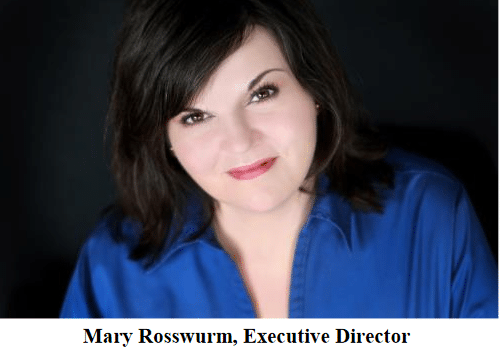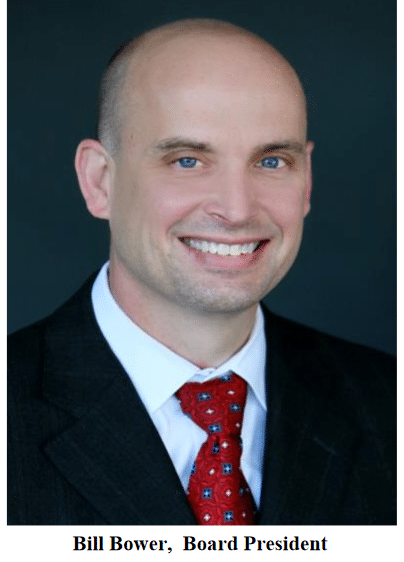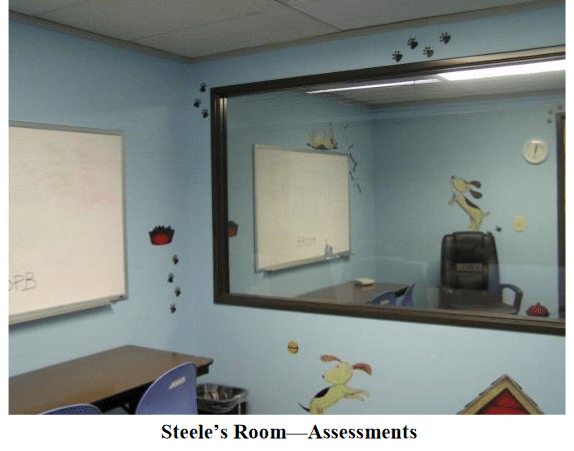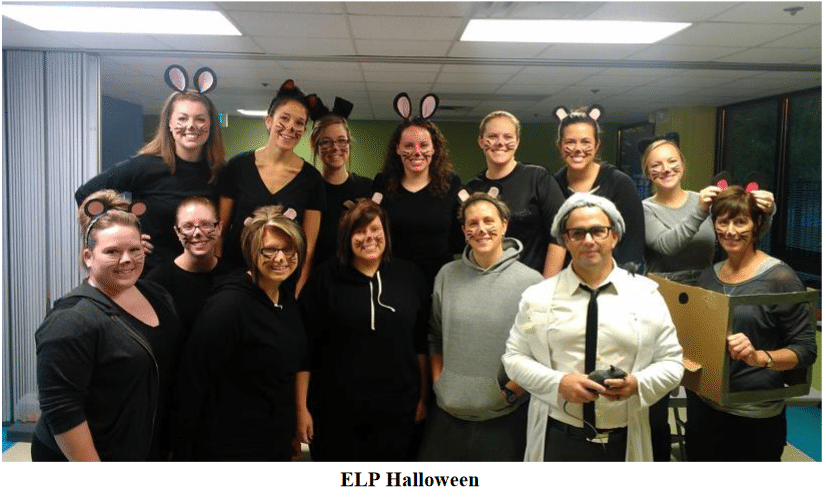Conducted by David Celiberti, ASAT Executive Director
As part of this issue’s dedication to the Little Star Center, I had the opportunity to interview some of the leaders of this program of excellence: Mary Rosswurm (Executive Director), Bill Bower (Board President), and Michele Trivedi (Board Member and parent).
Q: Mary, on behalf of ASAT’s board we would like to thank Little Star for many years of support as one of our highest level sponsors. I was hoping you could share a bit about your background with our readers. Can you tell us about your career path, and what got you into the field of autism treatment, and specifically, behavior analysis?
 Mary: Well, I started out in speech therapy, but was really getting dissatisfied with many of the trends I was witnessing. It had changed and become, at least for me, churn and burn. Get them in, 50 minutes, 10 minutes of paperwork and then see you next week. When I went to school we wanted to see kids three times a week for maybe 20 to 30 minutes, but now it was see a client for 50 minutes once a week. I wasn’t seeing the progress and I think, looking back, I was really motivated by their success. I had the opportunity to spend some time in the office of the clinic that I was working at and found that I was really enjoying some of the more administrative and support duties. Then the stars aligned (pun intended) and I had the opportunity to interview for a position with a struggling Applied Behavior Analysis (ABA) center. That was in 2004. I was able see first-hand how behavior fit in with everything – it just made sense to me and here I am, 10 years later! As I became more involved with the business side of the center, I went back to school and earned an MBA in 2006.
Mary: Well, I started out in speech therapy, but was really getting dissatisfied with many of the trends I was witnessing. It had changed and become, at least for me, churn and burn. Get them in, 50 minutes, 10 minutes of paperwork and then see you next week. When I went to school we wanted to see kids three times a week for maybe 20 to 30 minutes, but now it was see a client for 50 minutes once a week. I wasn’t seeing the progress and I think, looking back, I was really motivated by their success. I had the opportunity to spend some time in the office of the clinic that I was working at and found that I was really enjoying some of the more administrative and support duties. Then the stars aligned (pun intended) and I had the opportunity to interview for a position with a struggling Applied Behavior Analysis (ABA) center. That was in 2004. I was able see first-hand how behavior fit in with everything – it just made sense to me and here I am, 10 years later! As I became more involved with the business side of the center, I went back to school and earned an MBA in 2006.
Q: What an interesting career path, Mary. Tell us a little about the Little Star Center (my turn with the pun) and how the program has evolved.
Mary: When I started at Little Star, there were only four families left, as the center had gone through a split and most of the families and clinical staff left to form a new center. The founder of the center was very hurt by the whole episode and pretty much wanted to close Little Star down, but the remaining families wanted to keep going. The founder turned Little Star over to the parents and it became a parent run co-op until 2008, when that model just didn’t work anymore for such a growing organization. At that time, the parent co-op dissolved and the center’s Board of Directors took over control again. We have 75 learners now across three centers in Carmel’s two locations, and Lafayette as well as a new center opening in Bloomington in the spring.
Q: Bill and Michele, you have been on the Board at Little Star for a number of years. What makes you want to volunteer your time to this organization?
 Bill: I am very proud that Little Star has grown from a small single facility that operated as a cooperative among parents trying to find therapeutic solutions for their children with autism to a three center (soon to be four) operation that provides a full spectrum of services from early childhood to adolescence and entry into adulthood. All of this has been done as a not-for-profit, which has allowed us to provide free or reduced cost services to families in need. In fact, over the last 18 months Little Star has given over $250,000 in free or reduced services to families in need!
Bill: I am very proud that Little Star has grown from a small single facility that operated as a cooperative among parents trying to find therapeutic solutions for their children with autism to a three center (soon to be four) operation that provides a full spectrum of services from early childhood to adolescence and entry into adulthood. All of this has been done as a not-for-profit, which has allowed us to provide free or reduced cost services to families in need. In fact, over the last 18 months Little Star has given over $250,000 in free or reduced services to families in need!
Michele: When my daughter was diagnosed with autism in 2000, there were only two choices to access ABA therapy in Indiana – use one of the two Lovaas Institute consultants that lived in the state, or fly a consultant in from the coasts. For parents to have a resource like Little Star at a time when their life is turned upside down is so important. As a not-for-profit, the extra, non-billable services families receive in terms of securing health insurance, navigating waivers, finding support groups, and having a knowledgeable team to walk the journey with you is invaluable. I am proud to be a small part of what Little Star does to help parents and their children with autism. The community service that Little Star provides through its engaged and generous staff is another reason why I am so willing to volunteer for Little Star. From free community education programs, to training future nurses and ABA providers at no charge, to supporting local autism advocacy groups, to leadership in the local ABA provider groups, Little Star touches many lives well beyond the families that walk through our doors every day.
Bill and Michele, that is incredible! OK, all three of you, what is your vision for the future of Little Star Center?
Mary: I see Little Star continuing to grow, but in the slow, planful fashion that has guided its evolution to date. It’s really hard to maintain quality when you grow too fast. Also, as my son, who has autism, has gotten older, he’s 23 now; I have become more and more aware of the lack of adult services available. Our “little stars” are growing up and there’s not a lot out there for them. That is an area we are looking at further.
Bill: We feel strongly that we have the best centers in Indiana for ABA services. I would like for us to continue to grow and be able to help more families, all while effectively navigating the ever-changing medical and insurance environments.
 Michele: I see a bright future for Little Star! We will continue with controlled growth in under-served communities to increase access to quality ABA services outside of the “wealthy” counties where ABA providers tend to set up shop. We will continue to advocate for proper health insurance coverage for autism in all health plans, state- and federally-regulated, as well as Medicaid. We will continue to be valued partners for our advocacy organizations locally and nationally. We will also continue our efforts to advance the profession of Behavior Analysis, and to advance re-search.
Michele: I see a bright future for Little Star! We will continue with controlled growth in under-served communities to increase access to quality ABA services outside of the “wealthy” counties where ABA providers tend to set up shop. We will continue to advocate for proper health insurance coverage for autism in all health plans, state- and federally-regulated, as well as Medicaid. We will continue to be valued partners for our advocacy organizations locally and nationally. We will also continue our efforts to advance the profession of Behavior Analysis, and to advance re-search.
Q: Bill, you knew the founder of Little Star Center, whom Mary shared had died in a plane crash in 2006. What do you think he would think of Little Star today?
Bill: When Steele Gudal’s widow asked me to take his board seat at Little Star, I knew it was important to grow the organization and its mission to be part of Steele’s legacy. We have been lucky to have a very strong Executive Director, and great clinical staff that have allowed us to expand Little Star to have a positive impact on many families in Indiana. I know that Steele would be very proud of what Little Star has become.
Michele: I agree! Steele would indeed be very proud of what Little Star has become and where it is going. The quality of therapy provided at Little Star is top notch because of the dedication that our Executive Director and our clinical staff have to providing preeminent child-first care. At the same time, we are growing with a careful mind to never compromise that quality – Steele would love that! We are helping to ensure that families from all walks of life can afford ABA. Steele experienced first-hand not being able to find an ABA provider for his children in Indiana, and he experienced first-hand not having health insurance coverage for ABA – paying thousands out of pocket to help his girls. Steele would be proud that Little Star has given over $1 million in uncompensated care to families in need, and that we are serving families in every income bracket.
Q: Michele, anything else you would like to add?
Michele: Little Star has been such a blessing for our family, I am happy to “pay it forward” by volunteering my time on the Board to continue Steele’s vision! Little Star is like a second family to us, and our daughter is so happy to be there every day and has progressed so much. Our family would love to see a day where each family living with autism feels like they have such a wonderful support system!
 Q: Mary, I would also like to ask you about your perceptions of services at the state level as autism services vary widely across the United States. What is it like in Indiana? What changes have you observed in the last few years?
Q: Mary, I would also like to ask you about your perceptions of services at the state level as autism services vary widely across the United States. What is it like in Indiana? What changes have you observed in the last few years?
Mary: Well, there are a lot of services in Indiana, but not all BCBAs (or providers) are created equal! Unfortunately, a lot of people have begun to provide services because they can bill insurance companies for reimbursement. Many parents don’t know what to look for, so they go for the flashy building or the provider who will promise them the results that they are hoping for. However, there are some really good service providers in the state that are offering high quality services and really making a difference in the lives of a lot of kids. That is why I’m so excited about what ASAT does – it makes educating parents and doctors about quality ABA services that much easier!
Q: Mary, how did you find out about ASAT?
Mary: I was at an ABAI conference in 2008, maybe, and I saw Mary Jane Weiss. I am a huge fan of her book, Applied Behavior Analysis and Autism: An Introduction, so I went up and introduced myself as a super fan. She was doing a panel discussion with you, and we were introduced. That was how I first became aware of ASAT, but I just can’t remember the rest of the details – it’s hard for me to remember my pre-ASAT existence…it just feels like it’s always been around for me to refer to! As my job entails working with parents of newly diagnosed children, I am always working on guiding them to evidence-based treatments as opposed to the new, flavor of the month. I give the ASAT info  flyer to e v e r y family that comes through Little Star. Even if they don’t choose Little Star as their service provider, I want them to know about the resources available and help them become a savvy consumer.
flyer to e v e r y family that comes through Little Star. Even if they don’t choose Little Star as their service provider, I want them to know about the resources available and help them become a savvy consumer.
I also truly enjoy the ASAT newsletter and look forward to reading it each quarter! Running a not-for-profit, I understand that these things cost money and the thought of ASAT not being available…well, that is a bad thought – so I really felt like I should take on a supportive role – both financially and by spreading the word about what ASAT does.
Q: Mary, has ASAT been helpful to you and Little Star in your treatment of autism?
Mary: Yes, absolutely! I come in contact with parents, doctors, teachers, college interns, and the news media, just to name a few, and I am asked for my opinion a lot – I appreciate having ASAT as a resource and saying, “Hey, don’t just take my word for it…” Let’s face it, I’m selling Little Star services and I am biased about ABA…I like to have a back-up plan that pulls me out of the equation and can support what I’m saying. If somebody asks me about horse therapy, it’s not just Mary saying: “Horse therapy, while fun, is not an effective, evidenced-based treatment.” I often say, “Well, let’s go see what the autism experts at ASAT think about this therapy.” So it’s like a second opinion from really, really, really smart people!
Q: Mary, as a parent, why do you think pseudoscientific treatment flourishes in autism?
Mary: Well, there are a couple reasons. In 2010, my son went into the emergency room with a sore neck, a really bad headache and vomiting…and we left two weeks later after he had brain surgery to remove a tumor. But that experience was vastly different from his autism diagnosis experience. For the tumor, the doctors laid it all out for us – surgery, chemo and perhaps radiation. Follow up MRIs twice a year for 10 years. They gave me the plan. When my son was diagnosed with autism, it was like, “Well, maybe call the school and good luck to you. Oh, and get some speech therapy and occupational therapy.” The plan was left up to me. That right there, I think, is the difference. The people diagnosing do not have a plan to give parents so then they hit the internet.
 From here, we get the shotgun blast approach, which is: try everything all at once. It often seems that the kid who is getting some good ABA at the same time he is on a gluten-free diet, will have parents who say, “Boy, is that diet a miracle!” But more problematic, I think, is the no stone left unturned approach…there is always something new out there and as a parent, you would never want the one thing that you did not try to be the one thing that made a difference. This is why it is so important that diagnosticians give parents of newly diagnosed children a plan with realistic time frames and outcome expectations. With the brain tumor, I never thought that I should seek alternative treatments, but this is just not the case for autism.
From here, we get the shotgun blast approach, which is: try everything all at once. It often seems that the kid who is getting some good ABA at the same time he is on a gluten-free diet, will have parents who say, “Boy, is that diet a miracle!” But more problematic, I think, is the no stone left unturned approach…there is always something new out there and as a parent, you would never want the one thing that you did not try to be the one thing that made a difference. This is why it is so important that diagnosticians give parents of newly diagnosed children a plan with realistic time frames and outcome expectations. With the brain tumor, I never thought that I should seek alternative treatments, but this is just not the case for autism.
I think another issue is that we live in America. I want it fast and I want it easy. Intense therapy takes a long time and it is expensive. Parents are looking for a quick fix (aren’t we all!). Really, think about it, I can have 40 pounds of fat sucked out of me and buy a better nose. I can make my brown eyes blue with contacts and be a blonde within a matter of hours. We don’t like to wait – for anything – and autism treatment is no different. We know that diet and exercise is really the best way to lose weight for long-term results, but so often we’ll try the diet pill. So, I guess my point is that the best way is not necessarily the easiest way.
Q: Mary, you raise so many valid points that characterize the challenges facing so many of our families. What suggestions do you offer parents of newly diagnosed children?
 Mary: Grieve. It’s OK…be sad, be mad, join a support group, but then pull yourself up by your boot straps and move forward. I know that this is not what they had planned, but this is the hand that life dealt them and they have to make the best of it. I swear that it gets easier. Find some other parents that know what you are going through and surround yourself by supportive people. Autism is a marathon, not a sprint, so drink your Gatorade!
Mary: Grieve. It’s OK…be sad, be mad, join a support group, but then pull yourself up by your boot straps and move forward. I know that this is not what they had planned, but this is the hand that life dealt them and they have to make the best of it. I swear that it gets easier. Find some other parents that know what you are going through and surround yourself by supportive people. Autism is a marathon, not a sprint, so drink your Gatorade!
Q: Mary, what advice do you have for new professionals in the field?
Mary: Of course, to sign up for the ASAT newsletter, and that they need to know what they don’t know; it’s okay, we don’t expect them to know everything! Be open to continually learn, don’t over promise to parents and if the day comes that you don’t enjoy what you do, find something that you do.
Thank you all for a great interview and for your support of ASAT! I want to share with our readers that I had the opportunity to visit Little Star Center in 2012 and was very impressed with the program, facilities, and staff. It was a privilege to showcase information about Little Star Center in this issue of our newsletter. Keep up the great work!
Citation for this article:
Celiberti, D. (2014). An interview with Mary Rosswurm, Bill Bower and Michele Trivedi of the Little Star Center. Science in Autism Treatment, 11(1), 6-10.

